Pressure vessels, also known as ASME tanks, are a type of industrial equipment used for storing vapors, gases, or fluids. They always store these at pressure levels above 15 pounds per square inch (psi), which is above atmospheric pressure. Pressure vessels have uses in mining, refineries, and military equipment such as submarines. They are used for storing a number of gases like chlorine, petroleum, and ammonia. Read More…
If you are looking for innovative pressure vessels, you’ve come to the right place! We actively manage your project every step of the way. We keep you informed of what we are doing to ensure we keep up to your standards and delivery times.
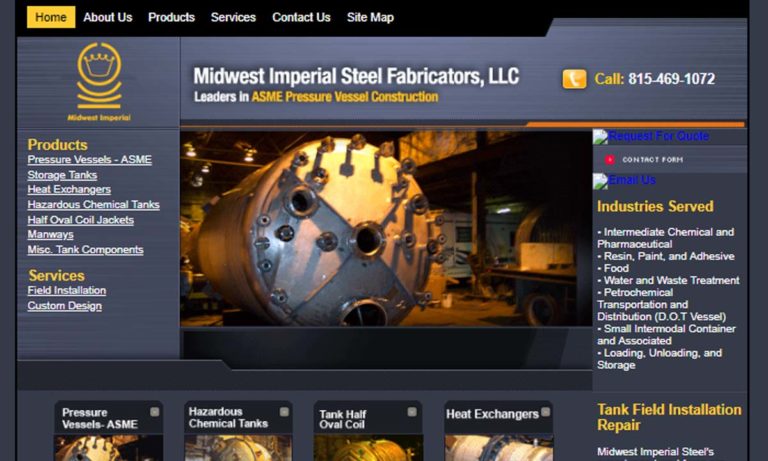
Gladwin Tank Manufacturing builds custom ASME pressure vessels. We work with stainless, carbon, duplex and the nickel alloys and offer custom rolling, plasma, and water jet cutting. Paired with our expertise in multiple welding procedures, we’re capable of handling every project, large and small. Contact us for your custom build requirements. We are more than just pressure vessels, we...
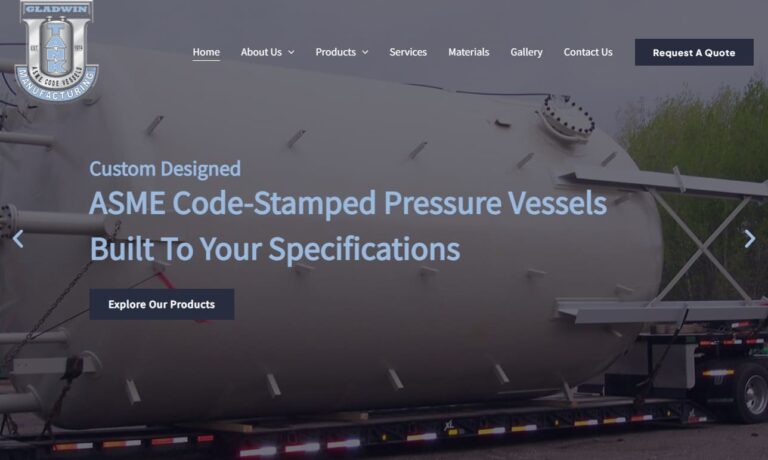
Rexarc’s focus is on the fabrication of custom stainless and carbon steel pressure vessels. We welcome applications with pressures between 500 and 5,000 psi. After nearly 100-years of being in business, Rexarc has the knowledge, attitude, equipment, and processes to support your needs in vessel production and value add services of piping, instrumentation, paint, and other controls...
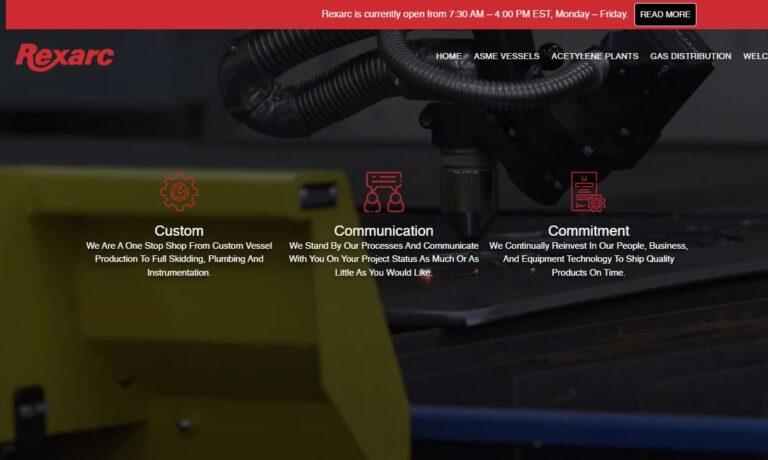
Midwest Tank Company has provided quality tanks to small and large corporations and contractors since 1972. Our reputation is built on exceptional services and customer satisfaction! Our fabrication techniques have been developed through years of tank specialization, combined with personnel who are experienced in all phases of our operation.
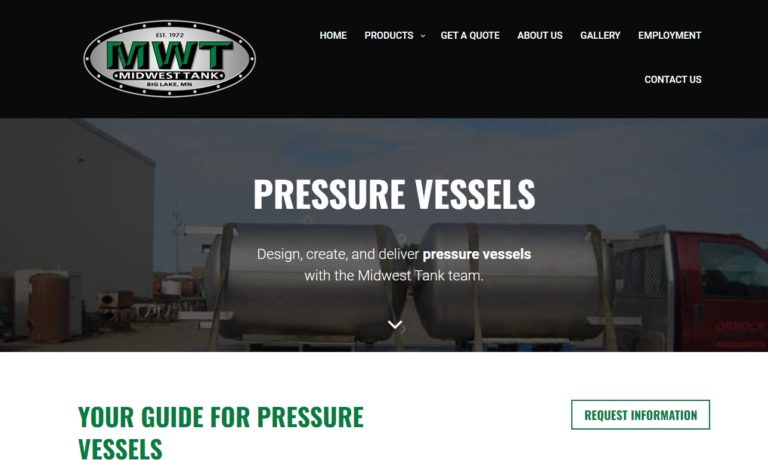
Vector Systems, Inc. is a leading provider of Process Control Equipment, specializing in comprehensive solutions for the Chemical, Power Generation, and other Industrial sectors. With a strategic focus on innovation and reliability, Vector Systems has become a trusted partner, offering a wide range of products and services tailored to the unique needs of demanding industries.

More Pressure Vessel Manufacturers
Pressure Vessel Applications
Pressure vessels, often referred to as air pressure tanks or compressed air tanks, are essential components across a multitude of industries. These structures are engineered to safely store and contain fluids or gases at elevated pressures, making them indispensable for processes where pressure control is critical. The robust design of pressure vessels ensures the safety of both the working environment and personnel, by containing potentially hazardous materials and preventing catastrophic failures.
In the industrial sector, air pressure tanks are widely used to power a variety of pneumatic tools and equipment. This includes machinery such as pneumatic drills, grinders, sanders, paint sprayers, and even robotics. By providing a consistent and reliable source of compressed air, these vessels increase productivity, improve process efficiency, and reduce downtime.
Pressure vessels also have a significant role in the transportation and automotive industries. Here, they serve as storage tanks for compressed natural gas (CNG), hydrogen, or other alternative fuels in vehicles. This enables longer travel distances between refueling, cuts operational costs, and supports the global shift toward sustainable, low-emission transportation solutions. Vehicles powered by CNG or hydrogen fuel cells rely on the advanced engineering of these tanks for safe, efficient fuel storage.
Within the oil and gas industry, pressure vessels are indispensable for the storage, separation, and purification of gases and liquids under high pressure. They are used extensively in oil refineries, petrochemical plants, and natural gas processing facilities. These vessels support crucial processes such as gas scrubbing, distillation, chemical reactions, and containment of volatile substances.
In the aerospace and aviation sectors, pressure vessels are core components in hydraulic systems, cabin pressurization systems, and gas storage for propulsion or life-support. Their lightweight yet durable construction is essential for meeting strict weight and safety regulations. Similarly, in the medical industry, pressure vessels are vital for storing medical gases like oxygen, nitrous oxide, and nitrogen, ensuring a steady and controlled supply for anesthesia, respiratory support, and sterilization processes.
The food and beverage industry employs pressure vessels for carbonation in soft drinks and beers, pasteurization, and various pressure-sensitive food processing and packaging tasks. These vessels help maintain product quality, flavor, and safety by controlling processing conditions.
In summary, air pressure tanks and industrial pressure vessels are used interchangeably across diverse sectors to power equipment, support sustainable transportation, enable critical industrial processes, facilitate medical treatments, and ensure the safety and efficiency of numerous modern systems.
Common Applications of Pressure Vessels:
- Pneumatic tool operation in manufacturing plants and workshops
- Chemical and petrochemical processing (reactors, separators, storage)
- Power generation (boilers, steam accumulators, heat exchangers)
- Water treatment (filtration tanks, water pressure tanks, and expansion tanks)
- HVAC systems (chillers, condensers, receiver tanks)
- Pharmaceutical production (sterile storage, reaction vessels)
- Laboratory and research (autoclaves, high-pressure reactors)
Are you searching for a specific type of pressure vessel for your application? Browse our comprehensive directory of pressure vessel manufacturers to connect with suppliers that match your requirements.
History of Pressure Vessels
The evolution of pressure vessels spans centuries, reflecting advances in engineering, materials science, and industrial safety. The earliest concepts date back to 1495, when Leonardo da Vinci designed air-pressured containers intended for lifting. However, widespread application began with the advent of the steam engine during the Industrial Revolution. Steam boilers, the first modern pressure vessels, enabled the generation and containment of steam for power, fundamentally transforming transportation and manufacturing.
Despite their revolutionary impact, early pressure vessels were often unreliable due to primitive manufacturing techniques and poor material quality. Boiler explosions were tragically common, causing significant loss of life and property. The need for safety led to the formation of the American Society of Mechanical Engineers (ASME) in 1880, which spearheaded the development of standardized codes and inspection methods for pressure vessels. The ASME Boiler and Pressure Vessel Code (BPVC), first published in 1914, set the groundwork for safe design, fabrication, and operation.
By 1919, manufacturers responded to the need for vessels capable of withstanding pressures up to 10,000 psi by introducing designs reinforced with spirally wound steel wires and additional steel rods. This innovation dramatically increased the safety margin for high-pressure applications.
The transition from riveted to welded construction further enhanced vessel reliability, particularly in industries such as chemical processing and petroleum refining. The inclusion of welding standards in the BPVC marked a pivotal shift toward modern pressure vessel fabrication, resulting in stronger, leak-proof joints and improved structural integrity.
Over time, engineers have pioneered a variety of pressure vessel testing methods, evolving from destructive tests to today’s sophisticated non-destructive evaluation (NDE) techniques. Tools such as radiography, phased array ultrasonic testing, and finite element analysis allow for comprehensive stress assessment and defect detection, ensuring compliance with increasingly stringent safety standards. Advances in metallurgy have introduced stronger materials, such as high-grade stainless steel, titanium, and specialized alloys, further reducing the risk of failure.
Looking ahead, the future of pressure vessel technology lies in the continued development of high-performance materials, advanced manufacturing methods like additive manufacturing (3D printing), and real-time condition monitoring using smart sensors. These innovations are poised to further enhance the safety, reliability, and efficiency of pressure vessels across all industries.
Interested in the evolution of pressure vessel safety standards? Learn more about ASME BPVC and global regulatory frameworks to understand how the industry ensures equipment reliability and operator safety.
How Pressure Vessels Work
At their core, pressure vessels are engineered to safely contain fluids or gases at pressures significantly higher or lower than ambient pressure, without failure or leakage. This is achieved through a combination of material strength, precise design calculations, and built-in safety mechanisms.
When pressurized, the internal fluid exerts force against the vessel walls in all directions. The vessel material, typically high-strength steel or advanced composites, must counteract this force to maintain structural integrity. The geometry of the vessel—often cylindrical or spherical—serves to evenly distribute stress and minimize weak points.
To prevent catastrophic failure, modern pressure vessels are equipped with multiple safety features:
- Pressure relief valves: Automatically vent excess pressure to prevent explosion.
- Rupture discs: Designed to burst at a set pressure, providing a fail-safe release.
- Safety interlocks: Disable operation if unsafe pressure levels are detected.
- Instrumentation: Real-time monitoring of pressure, temperature, and fluid levels.
Many vessels are also coated or lined with corrosion-resistant materials to extend their lifespan and maintain compliance with safety regulations.
Wondering how to select the right pressure vessel for your application? See our comprehensive buying guide below to match vessel type, material, and safety features to your project requirements.
Materials Used in Pressure Vessels
The choice of material in pressure vessel manufacturing is critical, as it directly impacts safety, durability, and performance. Manufacturers select materials based on factors such as operating pressure, temperature, fluid corrosivity, weight considerations, and regulatory requirements.
Stainless steel is one of the most common materials, prized for its exceptional strength, chemical resistance, and corrosion resistance. Variants like 304L and 316L offer excellent weldability and are often used in food processing, pharmaceuticals, and chemical industries.
Carbon steel is favored for its high tensile strength, vibration resistance, and cost-effectiveness. It is widely used in oil and gas, power generation, and industrial storage tanks. Its recyclability also supports sustainable manufacturing practices.
Titanium stands out for its superior corrosion resistance, high melting point, and compatibility with a range of chemicals. It is often the material of choice in aerospace, marine, and high-purity chemical processing applications where long-term durability is paramount.
Nickel alloys (such as Inconel and Monel) excel in harsh operating environments, offering resistance to thermal shock, oxidation, and carburization. They are commonly specified for high-temperature reactors and vessels exposed to aggressive chemicals.
Hastelloy alloys, including C276, S, C, and B2, are renowned for their outstanding resistance to corrosion and cracking in challenging environments, making them ideal for pressure vessels used in chemical processing, petrochemical plants, and offshore oil rigs.
Aluminum provides a cost-effective, lightweight alternative for certain applications, particularly where weight reduction is essential. Its high expansion coefficient and good machinability make it suitable for portable tanks and low-pressure vessels.
Fiberglass-reinforced plastic (FRP) and other composite materials are increasingly used for applications requiring non-conductivity, chemical resistance, and lightweight construction, such as water treatment and chemical storage tanks.
Need help choosing the best material for your pressure vessel? Contact our experts to discuss your operating environment, pressure ratings, and compliance needs.
Types of Pressure Vessels
The world of pressure vessels is diverse, with designs tailored to meet the unique demands of different industries and applications. Below are some of the most common types:
- Process tanks: Designed primarily for holding and storing liquids during manufacturing processes. Typical in chemical plants and water treatment facilities.
- Autoclaves: Vessels that use pressure and steam to facilitate chemical reactions, sterilization, rubber vulcanization, and synthetic crystal growth. Essential in medical, laboratory, and industrial settings.
- High-pressure vessels: Engineered for operation at pressures from 10,000 psi up to 150,000 psi. Used in supercritical extraction, high-speed mixing, and specialized chemical reactors.
- Expansion tanks: Integral to closed water heating systems, expansion tanks absorb excess pressure to protect plumbing and system components.
- Heat exchangers: Facilitate heat transfer between fluids or between a solid and a fluid. Common in HVAC, power generation, and chemical processing plants.
- Storage vessels: Used for storing pressurized contents such as propane, natural gas, air, or hot water. Applications range from residential propane tanks to industrial gas storage.
- Water pressure tanks: Essential for well water systems, these tanks maintain water pressure and ensure consistent flow to household or industrial fixtures.
- Vacuum tanks: Designed for short-term support in sewage, industrial cleaning, and process applications involving negative pressure.
- ASME pressure vessels: Marked by the ASME stamp, indicating compliance with the ASME VIII code. Used where regulatory compliance and traceability are mandatory.
- Thin-walled pressure vessels: Characterized by a wall thickness less than 10% of their diameter. Ideal for storing and transporting liquids and gases due to their efficient design.
- Boilers: Closed vessels designed to heat water or other fluids for cooking, power generation, heating, and sanitation. In the US, the term “boiler” is often used interchangeably with “furnace.”
Looking for a specific pressure vessel type? Browse our listings by product category or industry application to find the right solution for your needs.
Pressure Vessel Equipment Components
Each pressure vessel comprises several key components, each of which plays a vital role in ensuring safety and operational efficiency:
- Main container: The primary enclosure, often cylindrical, spherical, or conical in shape, chosen for optimal strength-to-weight ratio and ease of analysis.
- Safety valve fittings and closures: Ensure safe operation under varying pressure conditions.
- Agitation systems: Used for mixing or maintaining homogeneity of contents.
- Detachable or removable lids: Allow for easy access during inspection, maintenance, or cleaning.
- Heating and cooling systems: Regulate internal temperature for process control.
- Ladders, stairs, and observation sight glass: Facilitate safe access, monitoring, and maintenance.
Advanced vessels may also include sensors, automated controls, and integrated data logging for real-time process monitoring and quality assurance.
Pressure Vessel Production Process
The manufacturing process for pressure vessels is a meticulous combination of material preparation, forming, joining, and rigorous inspection, all governed by strict industry standards.
Production typically begins with the selection and preparation of metal, often through cold rolling to enhance tensile strength and temperature resistance. Processes such as tempering, quenching, or galvanizing may be employed to further improve material properties.
Three primary fabrication methods are commonly used:
- Forging: Utilizes heat and pressure to shape metal parts, resulting in strong, uniform components.
- Brazing: Joins two metals by filling the gap with a non-ferrous metal, ideal for complex geometries or dissimilar materials.
- Welding: The most prevalent method, where similar metal pieces are heated to their melting point and fused together, creating robust, leak-proof joints.
Before manufacturing begins, engineers conduct detailed calculations to determine design pressures, material selection, vessel dimensions, and required safety factors in accordance with applicable standards (e.g., ASME BPVC, PED, API codes).
After fabrication, vessels are subjected to thorough inspection and testing, including hydrostatic testing, non-destructive evaluation, and certification stamping. Custom vessels can also be engraved with ownership information, safety data, and manufacturer credentials for traceability.
Pressure Vessels within the Oil Refinery and Chemical Industry
In oil refineries and chemical plants, pressure vessels play a pivotal role in the containment and processing of volatile and corrosive substances. They function as reactors, separators, boilers, and heat exchangers, often exposed to aggressive chemicals and extreme operating conditions.
Due to the severe consequences of failure—ranging from environmental contamination to catastrophic explosions—these vessels are subject to the highest safety and quality standards. Regulatory codes such as ASME BPVC Section VIII, BS5500, and API 510 define stringent requirements for design, fabrication, inspection, and maintenance.
Key factors in selecting pressure vessels for the petrochemical industry include:
- Corrosiveness of operating fluid: Determines the need for specialized alloys or coatings.
- ATEX/ex-proof requirements: Mandate explosion-proof designs for hazardous environments.
- Operating and maximum allowable pressure/temperature: Dictate design margins and material selection.
- Process type: Whether the vessel is for storage (static) or flow (dynamic) operations, such as reactors or heat exchangers.
Do you need guidance on compliance or material selection for your chemical processing vessel? Reach out to our industry specialists for expert recommendations.
NDT Techniques for Pressure Vessels
Safety is paramount when dealing with pressure vessels containing toxic, flammable, or high-pressure gases and liquids. As such, a range of non-destructive testing (NDT) techniques are employed to verify vessel integrity without damaging the equipment. These tests are carried out by certified technicians and are integral to both new fabrication and ongoing maintenance programs.
Common NDT Methods for Pressure Vessels:
- Visual Testing: Involves careful inspection for visible defects such as corrosion, cracks, or physical damage. Enhanced tools like magnifiers and video scopes improve accuracy.
- Magnetic Particle Testing (MPT): Detects surface and near-surface defects in ferromagnetic materials. Cracks disrupt magnetic flux lines, attracting magnetic powders or fluorescent inks for easy identification.
- Eddy Current Testing: Uses electromagnetic induction to detect flaws in conductive, non-magnetic materials. Variations in current flow reveal defect locations and depths.
- Dye Penetrant Testing: A colored or fluorescent liquid is applied to the surface, seeping into cracks. Excess dye is removed, and a developer highlights flaw locations under UV or visible light.
- Ultrasonic Testing: High-frequency sound waves are transmitted into the vessel; internal flaws reflect the waves and are detected by sensors. Provides precise wall thickness and defect depth information.
- Radiographic Testing: X-rays or gamma rays penetrate the vessel, exposing film or digital sensors behind it. Variations in material density appear as dark or light areas, revealing internal defects or corrosion.
Implementation of these NDT methods is crucial for maintaining vessel safety, extending service life, and ensuring compliance with industry codes.
Safety and Compliance Standards of Pressure Vessels
Pressure vessel safety is governed by a complex framework of international, national, and industry-specific standards. Adherence to these regulations is mandatory to protect workers, facilities, and the environment from the risks associated with high-pressure systems.
The ASME Boiler and Pressure Vessel Code (ASME Section VIII) is the most widely recognized standard, setting out requirements for design, fabrication, inspection, and testing. Additional standards from organizations such as the American Petroleum Institute (API), European Union (PED 2014/68/EU), and local authorities complement ASME codes to address specialized applications and geographic requirements.
Commonly referenced standards and certifications include:
- PD5500
- ASME VIII (Div. 1 & 2, and holders of ASME U, U2, R, and NB stamps)
- EN13445
- EN14015 (BS2654)
- API 650, API 6A, API 510
- ASME B31.3
- DNV and NORSOK offshore rules
- GOST, SNIP standards (Russian Federation)
- NACE MR0175/ISO 15156 (sour service)
- PED 97/23/EC Compliance (Pressure Equipment Directive, EU)
These codes dictate every aspect of pressure vessel design and construction, from allowable stress and temperature limits to material traceability and quality control procedures. Compliance is verified through third-party inspection, rigorous documentation, and certification stamping.
Things to Consider about Pressure Vessels
Choosing the right pressure vessel is a critical decision that impacts system performance, operational safety, and regulatory compliance. Here are key factors to guide your purchasing process:
- Application requirements: Define the vessel’s intended use, operating pressure, temperature, fluid type, and volume.
- Material selection: Consider corrosion resistance, strength, weight, and cost based on your process environment.
- Regulatory compliance: Ensure your vessel meets all applicable codes and standards for your industry and location.
- Customization options: Many manufacturers offer custom fabrication to match unique size, geometry, or performance requirements.
- Inspection and maintenance: Evaluate the manufacturer’s post-delivery support, including installation, regular inspection, and repair services.
- Budget and lead time: Balance quality, compliance, and cost to select a solution that meets your timeline and financial needs.
To streamline your supplier search, we have compiled a directory of experienced pressure vessel manufacturers. We recommend the following steps:
- List your technical specifications, performance requirements, and any relevant standards.
- Identify three or four manufacturers whose profiles align with your needs.
- Contact each supplier to discuss your project, request quotes, and inquire about value-added services (e.g., installation, inspection, parts replacement).
- Compare offers and assess responsiveness, technical expertise, and support capabilities.
- Select the manufacturer who best meets your requirements for quality, compliance, and service.
Ready to take the next step? Request a custom pressure vessel quote or contact our team for personalized assistance.
Pressure Vessel Buying Guide: Frequently Asked Questions
- What is the difference between ASME and non-ASME pressure vessels? ASME vessels are designed, fabricated, and inspected under the ASME Boiler and Pressure Vessel Code, offering guaranteed compliance and traceability. Non-ASME vessels may suit non-critical applications but generally lack third-party certification.
- How do I determine the right size and pressure rating? Calculate the required working pressure, temperature, and storage volume for your application. Consult with manufacturers or a qualified engineer to ensure the vessel meets safety margins and code requirements.
- Can pressure vessels be customized for unique applications? Absolutely. Leading manufacturers offer custom design services, allowing for tailored geometry, material, ports, nozzles, and integrated controls.
- What maintenance is required for pressure vessels? Regular inspection, cleaning, NDT testing, and prompt repair of identified issues are essential to maintain safety and extend vessel life.
- How do I verify manufacturer credentials and compliance? Review certifications, inspection reports, and references. Look for ASME, PED, or applicable stamps, and request documentation as part of your procurement process.
What industries use pressure vessels?
Pressure vessels are used across many industries including industrial manufacturing, transportation and automotive (for CNG, hydrogen storage), oil and gas, aerospace, aviation, medical, and the food and beverage sector. Each industry relies on pressure vessels for storing or processing pressurized fluids or gases safely and efficiently.
What materials are commonly used in pressure vessel construction?
Common materials for pressure vessel construction include stainless steel, carbon steel, titanium, nickel alloys (like Inconel and Monel), Hastelloy, aluminum, and fiberglass-reinforced plastic (FRP). Material selection depends on factors such as pressure, temperature, chemical compatibility, and industry standards.
What are the main types of pressure vessels?
The main types of pressure vessels include process tanks, autoclaves, high-pressure vessels, expansion tanks, heat exchangers, storage vessels, water pressure tanks, vacuum tanks, ASME-coded vessels, thin-walled pressure vessels, and boilers. Each type is designed to meet specific operational and industry requirements.
What safety features are included in pressure vessels?
Pressure vessels incorporate safety features such as pressure relief valves, rupture discs, safety interlocks, real-time instrumentation, and corrosion-resistant linings or coatings. These mechanisms help prevent catastrophic failures and maintain safe operating conditions.
What standards regulate pressure vessel design and manufacturing?
Pressure vessel design and manufacturing are regulated by standards such as the ASME Boiler and Pressure Vessel Code (ASME Section VIII), API codes, PED (Pressure Equipment Directive) for the EU, EN13445, PD5500, and various regional and industry-specific standards. Compliance ensures safety and legal operation.
How is the integrity of a pressure vessel tested?
The integrity of a pressure vessel is verified using non-destructive testing (NDT) techniques such as visual inspection, magnetic particle testing, eddy current testing, dye penetrant testing, ultrasonic testing, and radiographic testing. These methods help detect flaws without damaging the vessel.
What factors should I consider when selecting a pressure vessel?
Key factors in selecting a pressure vessel include application requirements (pressure, temperature, fluid), appropriate material selection, regulatory compliance, customization needs, planned inspection and maintenance, budget, and lead time. Proper assessment ensures safety, efficiency, and longevity.



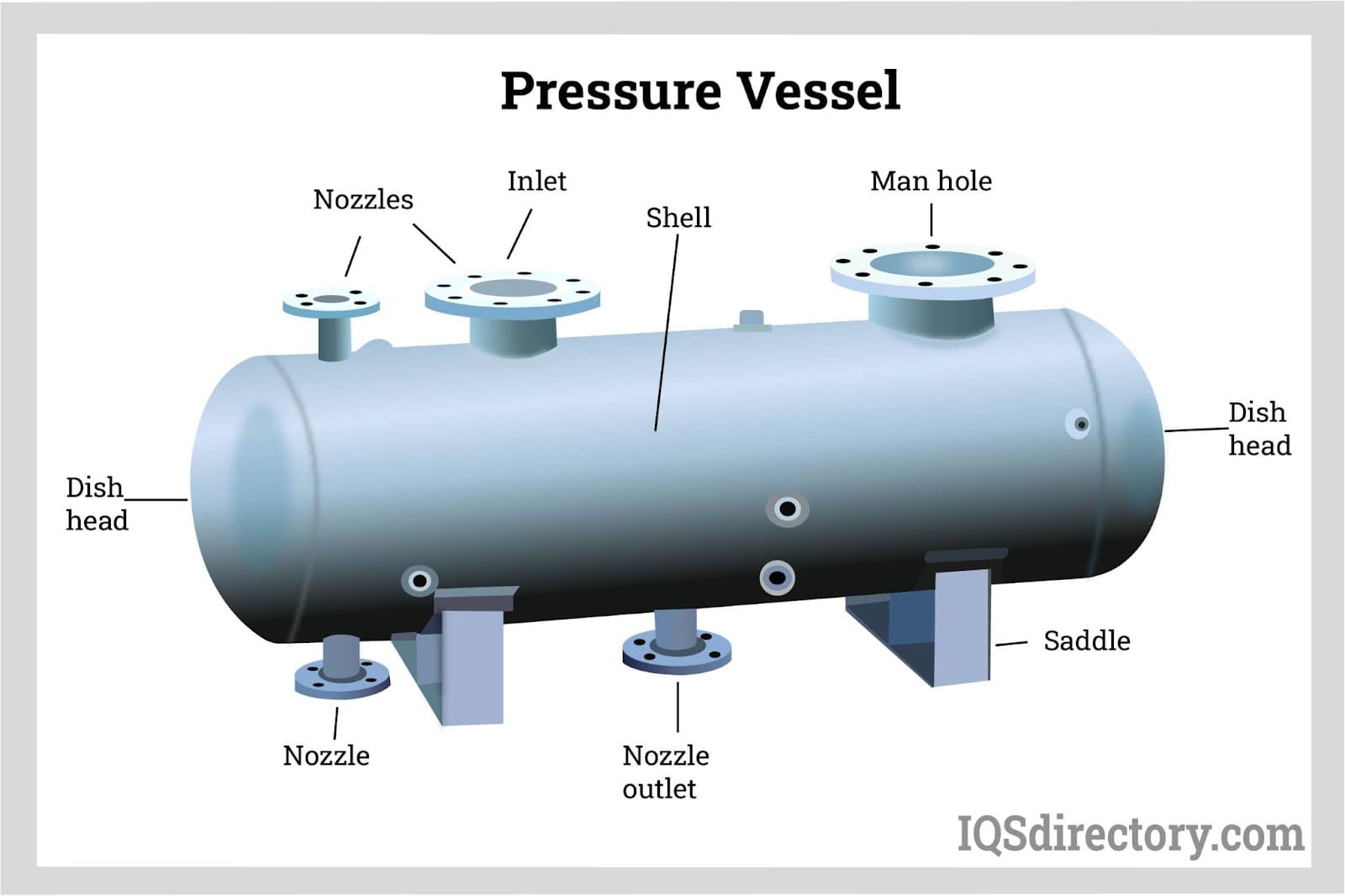
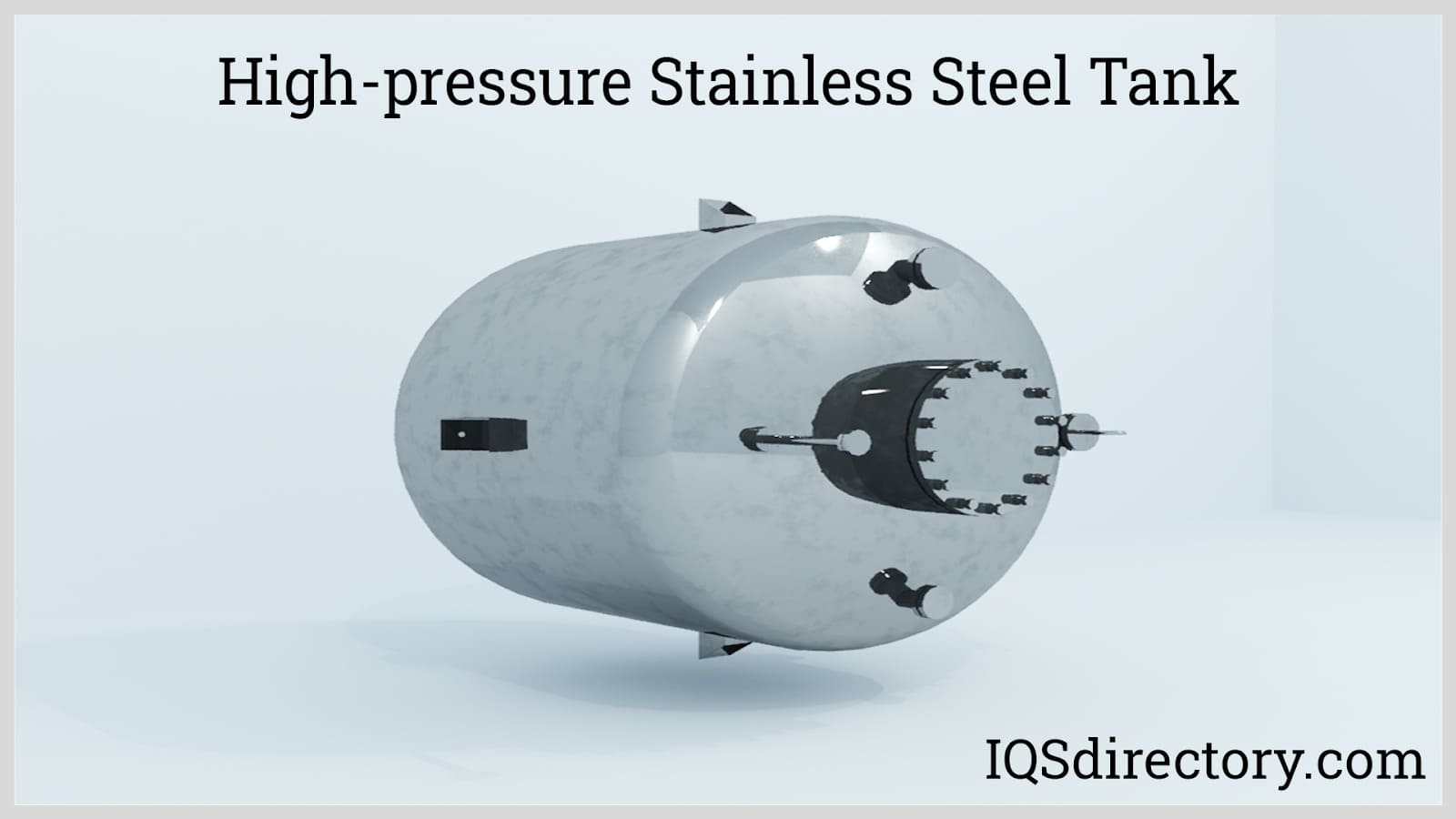

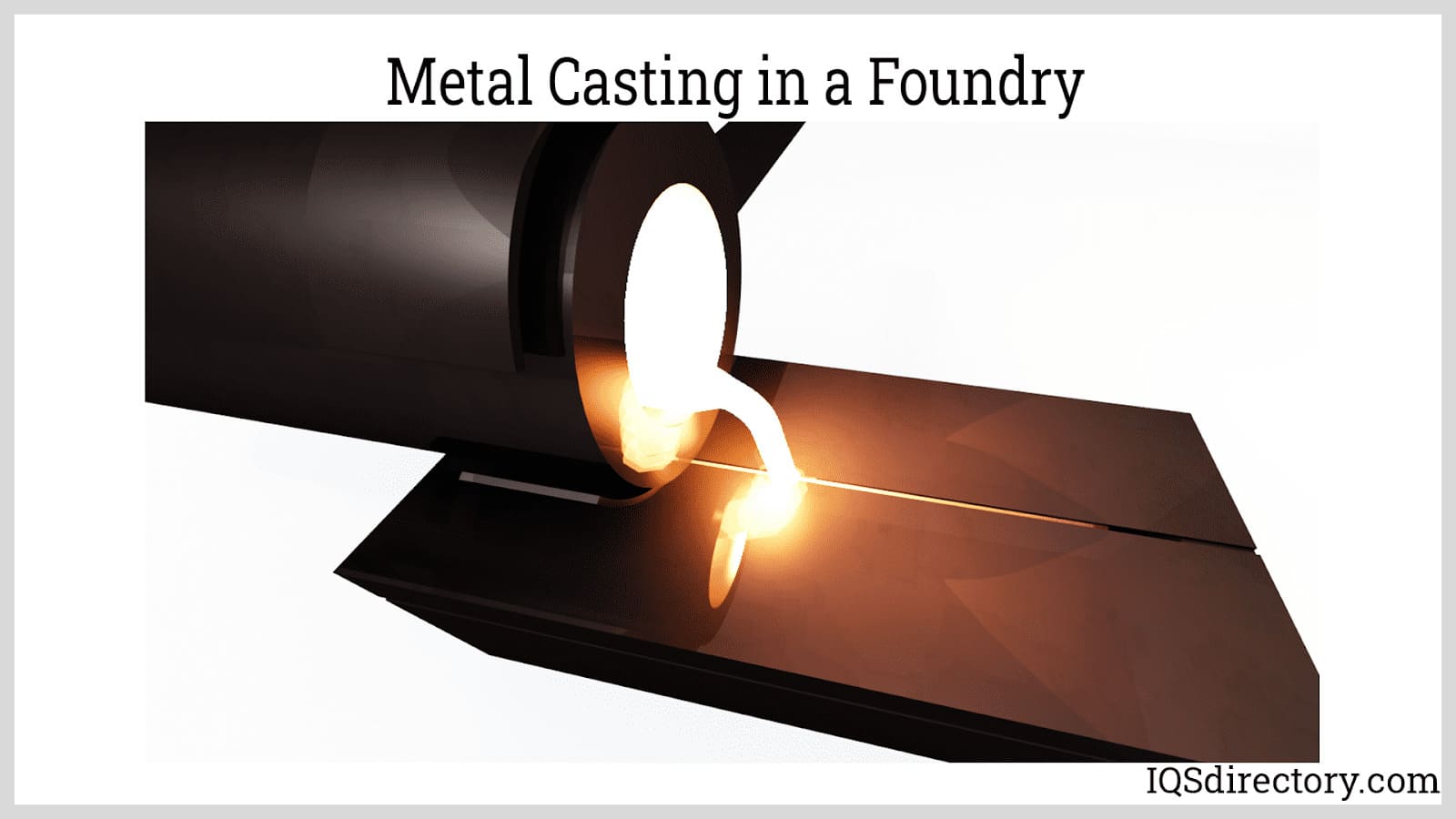

 Electric Heaters
Electric Heaters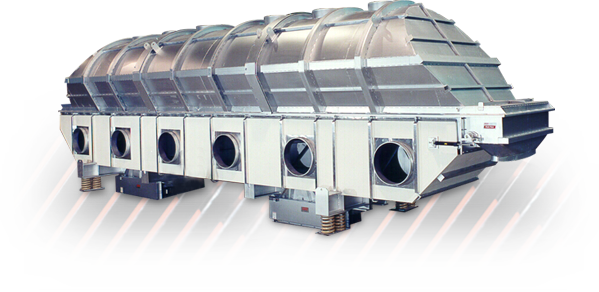 Industrial Dryers
Industrial Dryers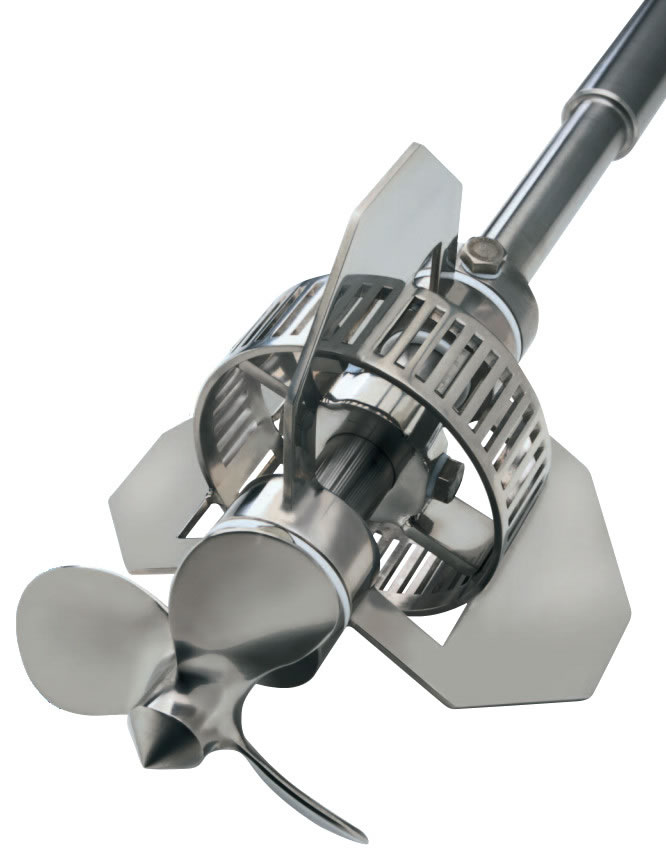 Industrial Mixers
Industrial Mixers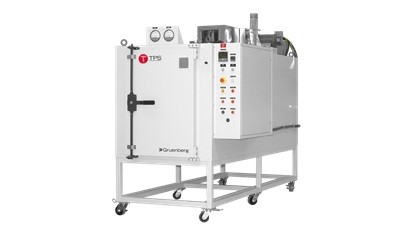 Industrial Ovens
Industrial Ovens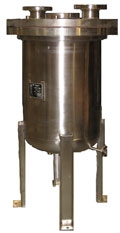 Pressure Vessels
Pressure Vessels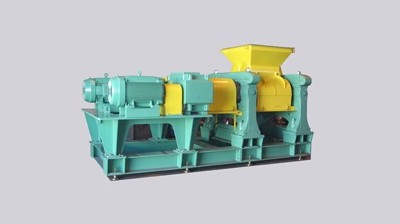 Pulverizers
Pulverizers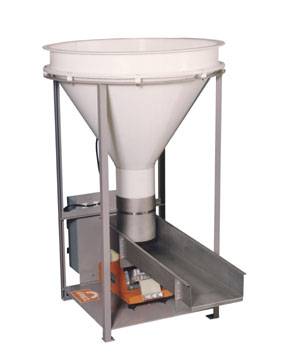 Vibratory Feeders
Vibratory Feeders Castings & Forgings
Castings & Forgings Bulk Material Handling
Bulk Material Handling Electrical & Electronic Components
Electrical & Electronic Components Flow Instrumentation
Flow Instrumentation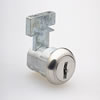 Hardware
Hardware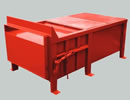 Material Handling Equipment
Material Handling Equipment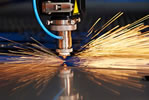 Metal Cutting Services
Metal Cutting Services Metal Forming Services
Metal Forming Services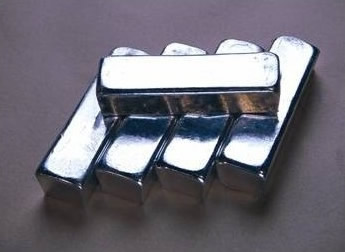 Metal Suppliers
Metal Suppliers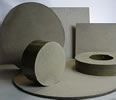 Motion Control Products
Motion Control Products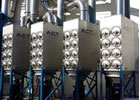 Plant & Facility Equipment
Plant & Facility Equipment Plant & Facility Supplies
Plant & Facility Supplies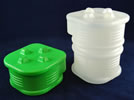 Plastic Molding Processes
Plastic Molding Processes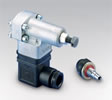 Pumps & Valves
Pumps & Valves Recycling Equipment
Recycling Equipment Rubber Products & Services
Rubber Products & Services